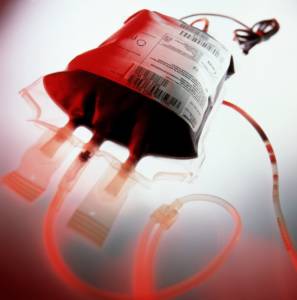
Some people’s attitude to blood transfusion is informed by their religious beliefs, which in some instances, prohibit blood transfusion.
And while blood transfusion saves lives and improves health, many patients who require and would accept a blood transfusion do not have timely access to safe blood.
The need for blood transfusion may arise at any time in both urban and rural areas. The unavailability of blood has led to deaths and many patients suffering from ill-health.
Around 107 million units of blood donations are collected globally every year. Nearly 50 per cent of these blood donations are collected in high-income countries, home to 15 per cent of the world’s population.
An adequate and reliable supply of safe blood can be assured by a stable base of regular, voluntary, unpaid blood donors. Regular, voluntary, unpaid blood donors are also the safest group of donors as the prevalence of bloodborne infections is lowest among these donors.
Here are 10 facts on blood transfusions:
1. Blood transfusion saves lives and improves health
Many patients requiring transfusion, however, do not have timely access to safe blood and blood products. Every country needs to ensure that supplies of blood and blood products are sufficient and free from HIV, hepatitis viruses and other infections that can be transmitted through transfusion.
2. Transfusions are used to support various treatments
In high-income countries, transfusion is most commonly used for supportive care in cardiovascular surgery, transplant surgery, massive trauma, and therapy for solid and haematological malignancies. In low- and middle-income countries it is used more often for management of pregnancy-related complications, childhood malaria complicated by severe anaemia, and trauma-related injuries.
3. Adequate supply of safe blood can only be assured through regular voluntary unpaid donation
Adequate and reliable supply of safe blood can only be assured through a stable base of regular, voluntary, unpaid blood donors. They are the safest group of donors because the prevalence of bloodborne infections is lowest among them. WHO urges Member States to develop national blood systems based on voluntary, unpaid blood donations to achieve the goal of self-sufficiency in safe blood and blood products.
4. Voluntary unpaid donors account for 100 per cent of blood supplies in 60 countries
In 2011, 71 countries reported collecting more than 90 per cent of their blood supply from voluntary, unpaid blood donors, among them 60 countries collect 100 per cent of blood supply from voluntary unpaid blood donors. But in 73 countries, less than 50 per cent of blood supplies come from voluntary unpaid donors, with much of their blood supply still dependent on family/replacement and paid blood donors.
5. Around 107 million blood donations are collected globally every year
About 50 per cent of these are donated in low- and middle-income countries where nearly 85 per cent of the world’s population lives. The average blood donation rate is more than 9 times greater in high-income countries than in low-income countries.
6. Collections at blood centres vary according to income group
About 10 000 blood centres in 168 countries report collecting a total of 83 million blood donations. The median annual blood donations per centre is 15 000 in high-income countries, as compared to 3100 in middle- and low-income countries.
7. More people in high-income countries donate blood than in other countries
The median blood donation rate in high-income countries is 39.2 donations per 1000 people. This compares with 12.6 donations per 1000 people in middle-income countries and 4.0 donations in low-income countries.
8. Donated blood should always be screened
All donated blood should always be screened for HIV, hepatitis B, hepatitis C and syphilis prior to transfusion. Yet 25 countries are not able to screen all donated blood for one or more of these infections. Testing is not reliable in many countries because of staff shortages, poor quality test kits, irregular supplies, or lack of basic quality in laboratories.
9. A single unit of blood can benefit several patients
Separating blood into its various components allows a single unit of blood to benefit several patients and provides a patient only the blood component which is needed. About 97 per cent of the blood collected in high-income countries, 78 per cent in middle-income countries and 40 per cent in low-income countries is separated into blood components.
10. Unnecessary transfusions expose patients to needless risk
Often transfusions are prescribed when simple and safe alternative treatments might be equally effective. As a result such a transfusion may not be necessary. An unnecessary transfusion exposes patients to the risk of infections such as HIV and hepatitis and adverse transfusion reactions.
(World Health Organisation)






Enlightening.
When I was a kid,I can remember hearing announcements over the radio asking folks to come to the hospital to donate blood for someone in need. At the time, I found it strange for people to be asking other people for their blood…as I got older, it came to past that my gran-dad needed a blood transfusion and thanks to families and friends, my grand-dad stayed around for a bit longer, to my utter delight.
But what is frightening these days are some of the lax procedures you hear about in the news about patients receiving infected blood etc, a most unfortunate occurrence. But I want to believe that such occurrence is not as prevalent as one may fear. I hope.